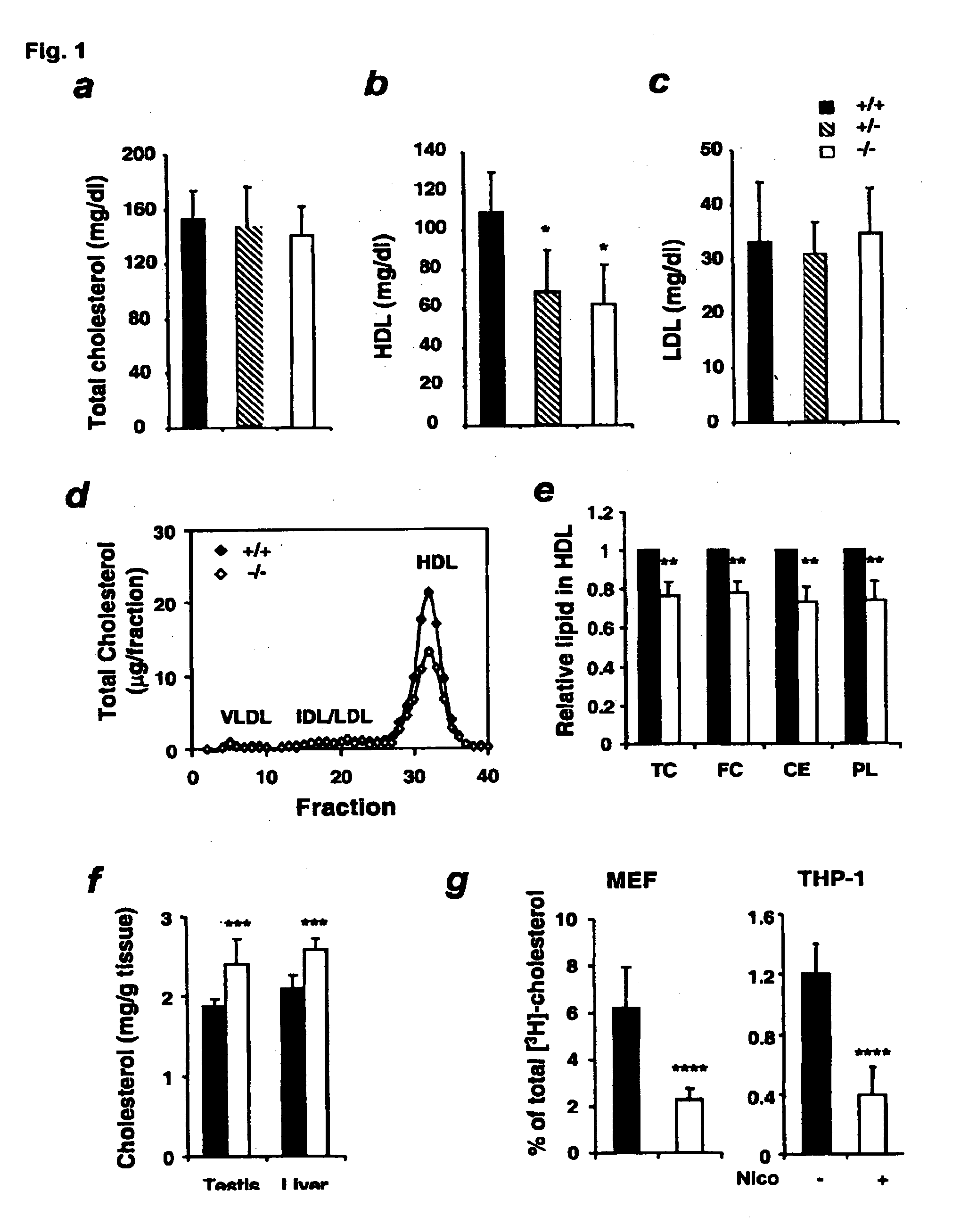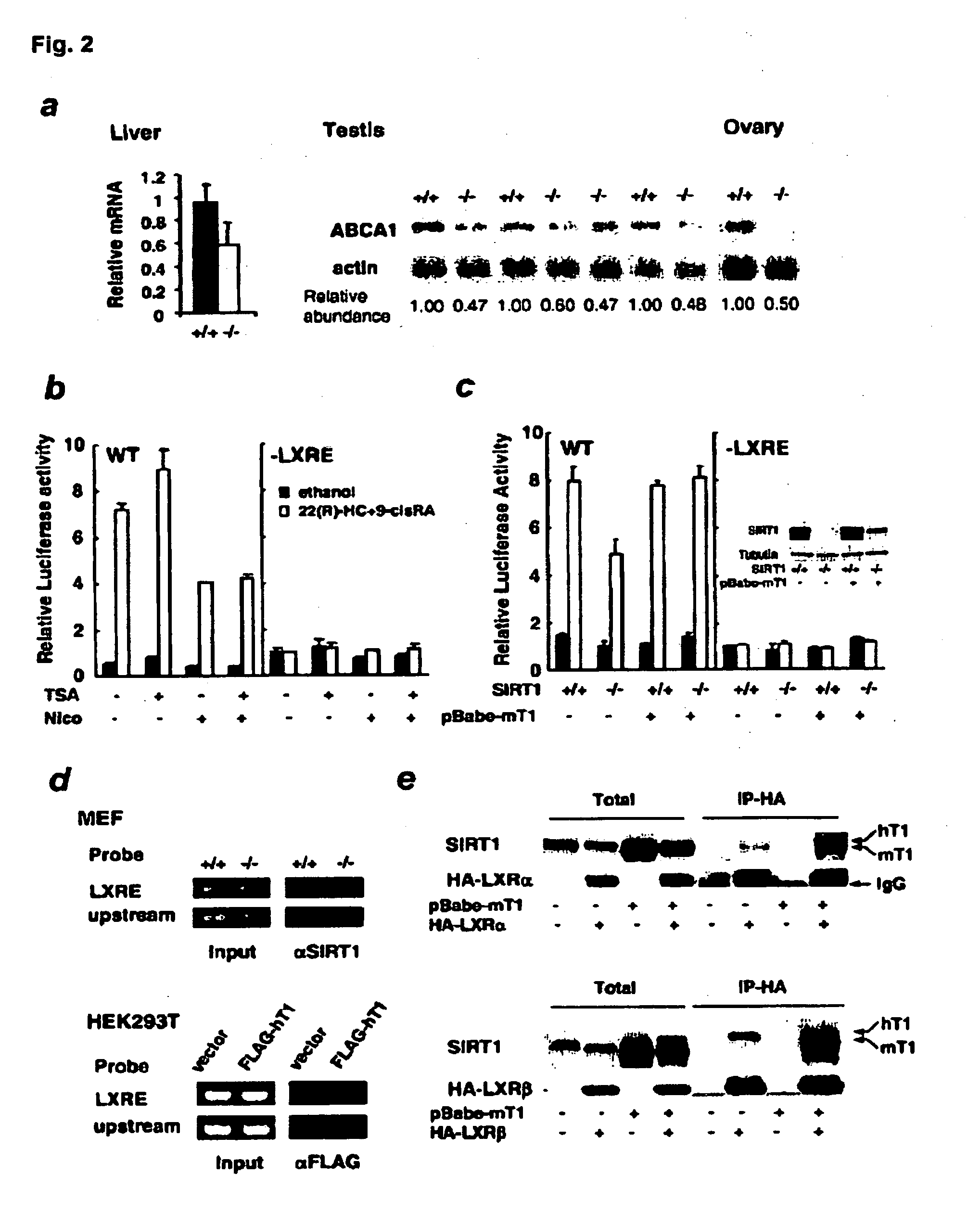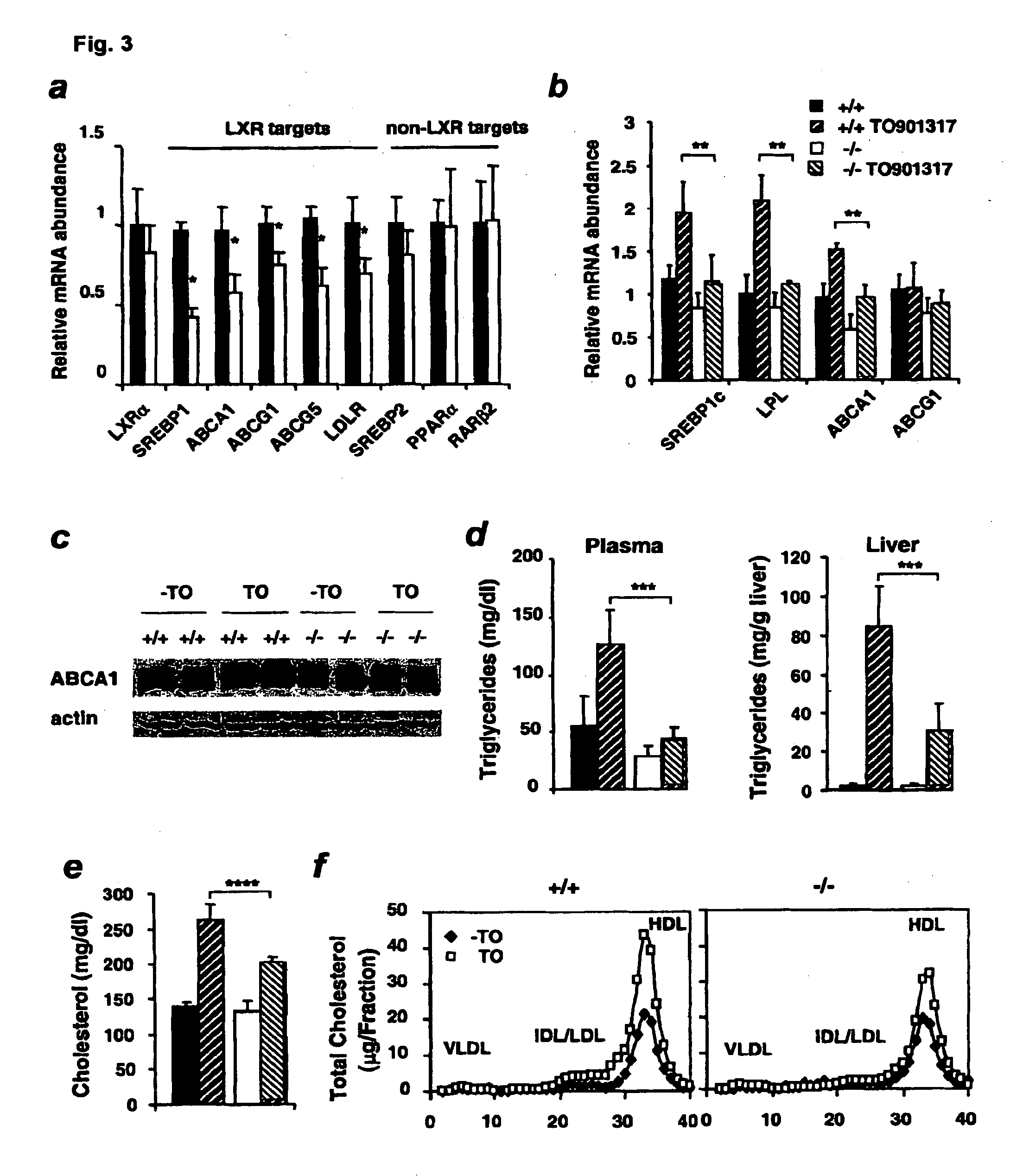Cholesterol-Regulating Complex of SIRT1 and LXR and Methods of Use
a cholesterol-regulating complex and complex technology, applied in the field of cholesterol-regulating complex of sirt1 and lxr and methods of use, can solve the problems of poorly understood underlying mechanisms by which genetic factors sense the environment to mediate age-associated diseases, and the risk of these disorders increases with ag
- Summary
- Abstract
- Description
- Claims
- Application Information
AI Technical Summary
Benefits of technology
Problems solved by technology
Method used
Image
Examples
example 1
Plasma Cholesterol in Wild Type and SIRT1 Knockout Mice
[0188]Ten wildtype, 13 SIRT1− / −, and 13 littermate SIRT1− / − male mice in each group were analyzed. Animals were fasted for four hours from the beginning of the daylight cycle, then blood was collected and plasma was obtained by K3-EDTA treatment. Plasma total cholesterol, HDL, and LDL levels were measured by the enzymatic, colorimetric assay kits (Wako Diagnostics, Richmond, Va.). 100 μl of pooled plasma from 4 SIRT1− / − and 4 littermate SIRT1+ / + males were size fractionated using two fast-performance liquid chromatography (FPLC) columns (Superose 6B columns, Amersham-Pharmacia Biotech, Piscataway, N.J.). A representative profile is shown from three independent experiments. Fractions from FPLC were then analyzed for cholesterol contents with the enzymatic, colorimetric assay kit from Wako. The experiment was repeated three times with total of 12 SIRT1− / − and 12 littermate SIRT1+ / + males. Results were compared with student's t-tes...
example 2
Cholesterol in Tissues of Wild Type and SIRT1 Knockout Mice
[0191]To determine the total cholesterol levels in mouse tissues, SIRT1− / − mice and control littermates were fasted for four hours from the beginning of the daylight cycle before sacrificing. Tissues were then harvested and weighted. Total cholesterol from liver and testis were extracted and measured by GC as described previously70, 71. Total lipids including triglycerides were also dissolved into a solution containing 60% butanol, 13% methanol, and 27% Triton X-100, and measured with the enzymatic, colorimetric assay kits from Wako.
[0192]In SIRT1− / − mice, abnormally low plasma HDL (Example 1) was associated with an increase in the accumulation of cholesterol within two tissues for which HDL is important as a source of exogenous cholesterol: the testis, which uses HDL cholesterol for sterol stores and steroidogenesis25 and is the organ that has highest relative levels of SIRT1 protein26, 27, and the liver, which plays a cent...
example 3
Efflux of Cholesterol from Wild Type and SIRT1− / − Cells
[0194]Reverse cholesterol transport is the process whereby excess cholesterol in peripheral tissues is transported to the liver for elimination from the body30, 31. The first step of this process is the efflux of cholesterol from cells to lipoproteins, particularly HDL. Several cell surface cholesterol transport proteins can mediate cholesterol efflux, including SR-BI32-35, ABCG136,37, and the best characterized of these, the ATP-binding cassette (ABC) transporter called ABCA1 that transfers unesterified cholesterol and phospholipids to lipid-poor apolipoproteins (mainly apoA-I) to form HDL particles30, 38-44. To test the effects of SIRT1 on this process, apoA-1-mediated cholesterol efflux was measured in two distinct cultured cell systems in which cells were labeled with [3H]cholesterol and the efflux of labeled cholesterol to apoA-I in the extracellular medium was monitored.
[0195]For MEFs, cholesterol efflux assay was performe...
PUM
| Property | Measurement | Unit |
|---|---|---|
| Density | aaaaa | aaaaa |
Abstract
Description
Claims
Application Information
 Login to View More
Login to View More - R&D
- Intellectual Property
- Life Sciences
- Materials
- Tech Scout
- Unparalleled Data Quality
- Higher Quality Content
- 60% Fewer Hallucinations
Browse by: Latest US Patents, China's latest patents, Technical Efficacy Thesaurus, Application Domain, Technology Topic, Popular Technical Reports.
© 2025 PatSnap. All rights reserved.Legal|Privacy policy|Modern Slavery Act Transparency Statement|Sitemap|About US| Contact US: help@patsnap.com



